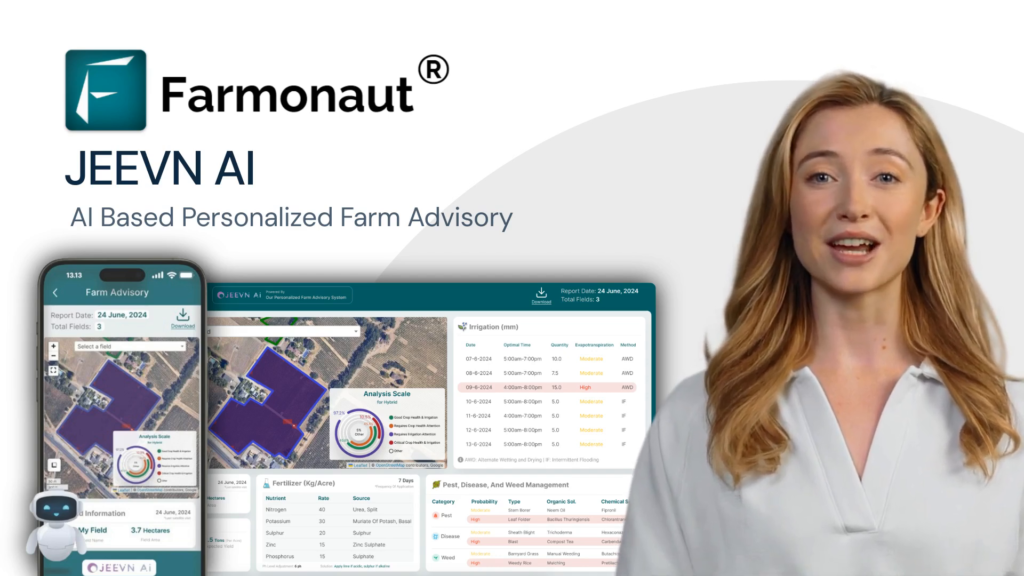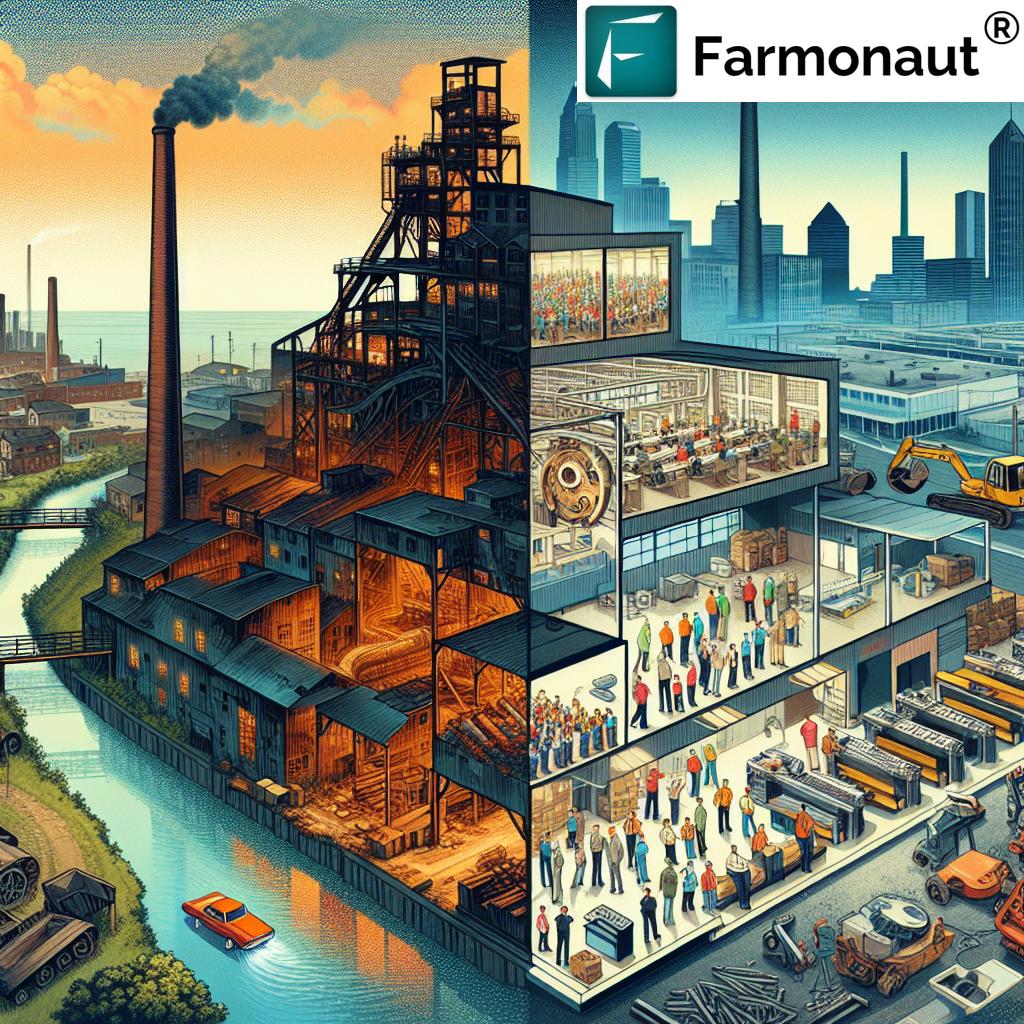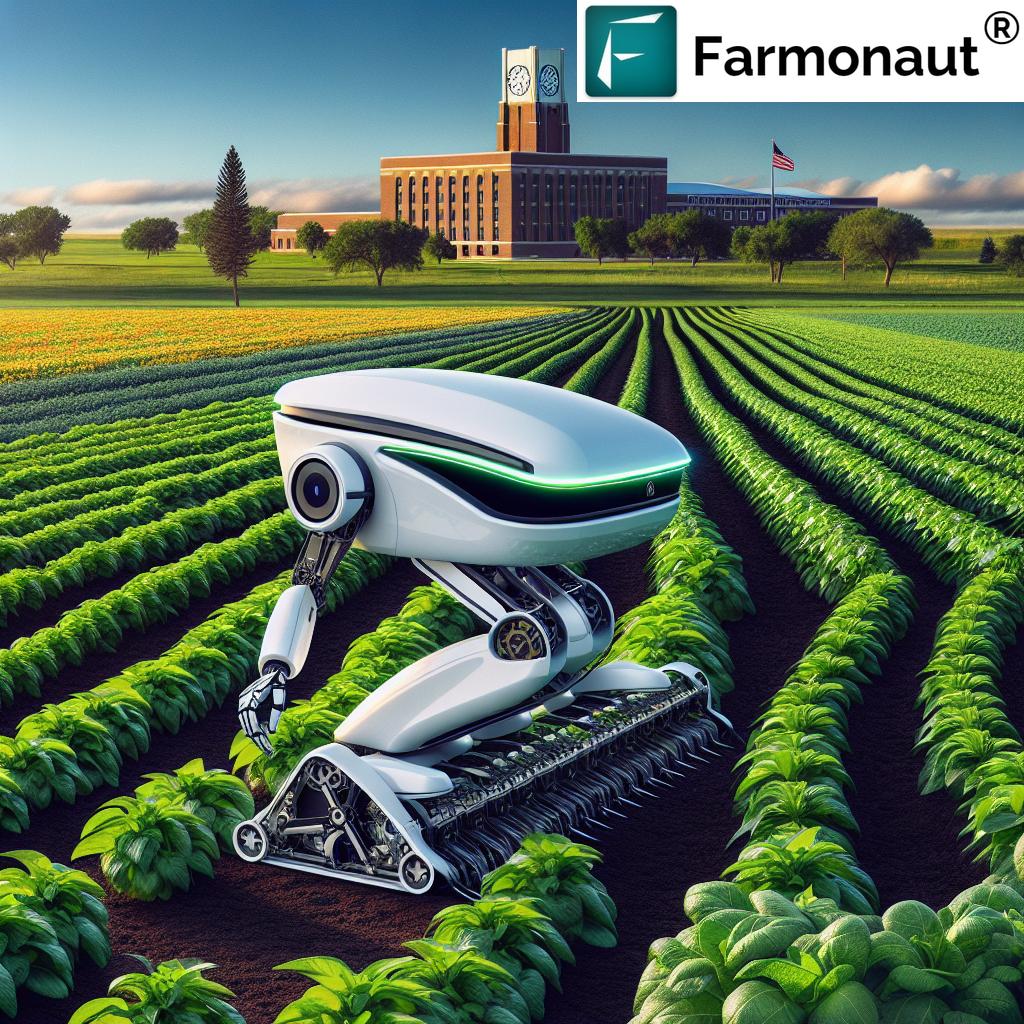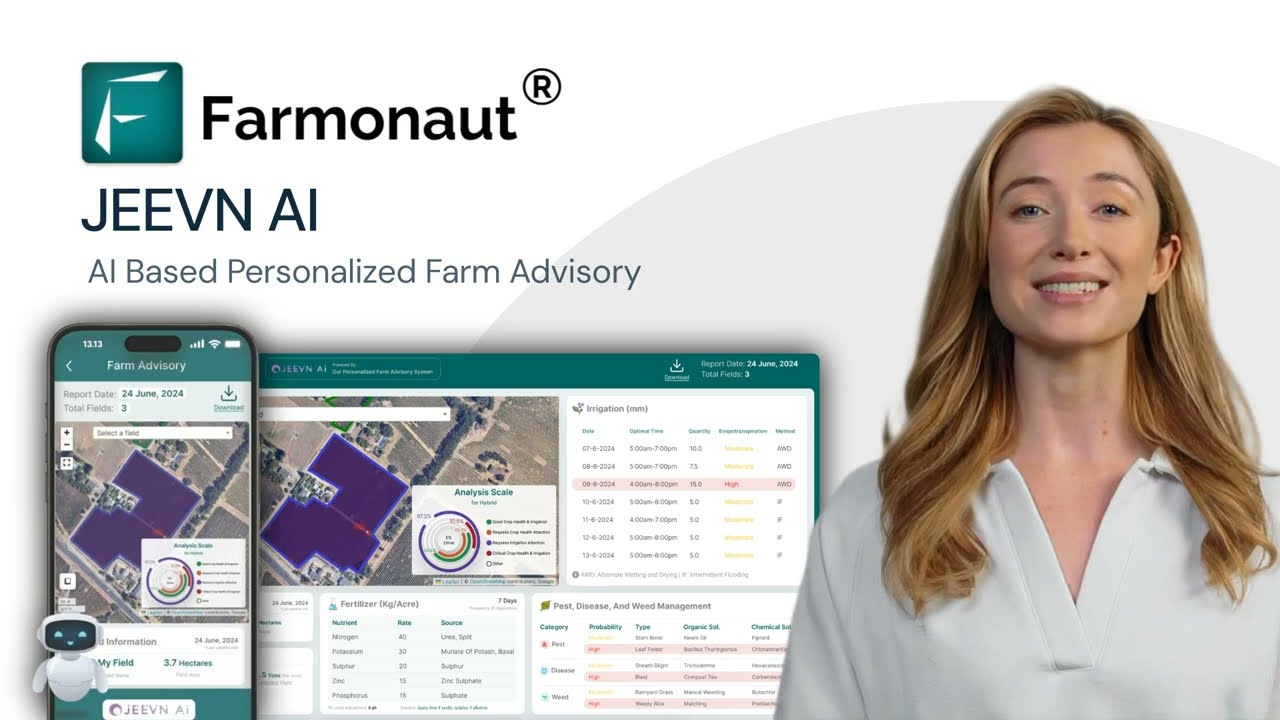
🌽 Introduction to JEEVN AI: A Game-Changer for Texas Corn Farmers
In the heart of Texas, where corn fields stretch as far as the eye can see, a revolution is brewing. Farmonaut Technologies has introduced JEEVN AI, an innovative solution that promises to transform the landscape of corn farming in the Lone Star State. This powerful tool harnesses the capabilities of artificial intelligence to provide Texas corn farmers with precise, actionable insights that ensure their farms thrive in an age where precision and efficiency are paramount.
With Texas being the 12th largest corn-producing state in the U.S., contributing significantly to the nation’s corn production, the introduction of JEEVN AI couldn’t be more timely. This cutting-edge technology is set to address the unique challenges faced by Texas corn farmers, from unpredictable weather patterns to soil nutrient management and water conservation.
🛰️ How JEEVN AI Works: Bringing Space-Age Technology to Texas Fields
JEEVN AI is not just another farm management tool; it’s a sophisticated system that brings the power of satellite technology and artificial intelligence to the fingertips of Texas corn farmers. Here’s how this cutting-edge AI system operates:
- Integrates satellite intelligence
- Analyzes local weather data
- Incorporates farm-specific information
- Processes various agricultural parameters
By combining these diverse data sources, JEEVN AI delivers precise recommendations tailored to the specific needs of each Texas corn farm. It’s like having a team of agricultural experts constantly monitoring your fields, providing guidance through every step of the corn growing process.
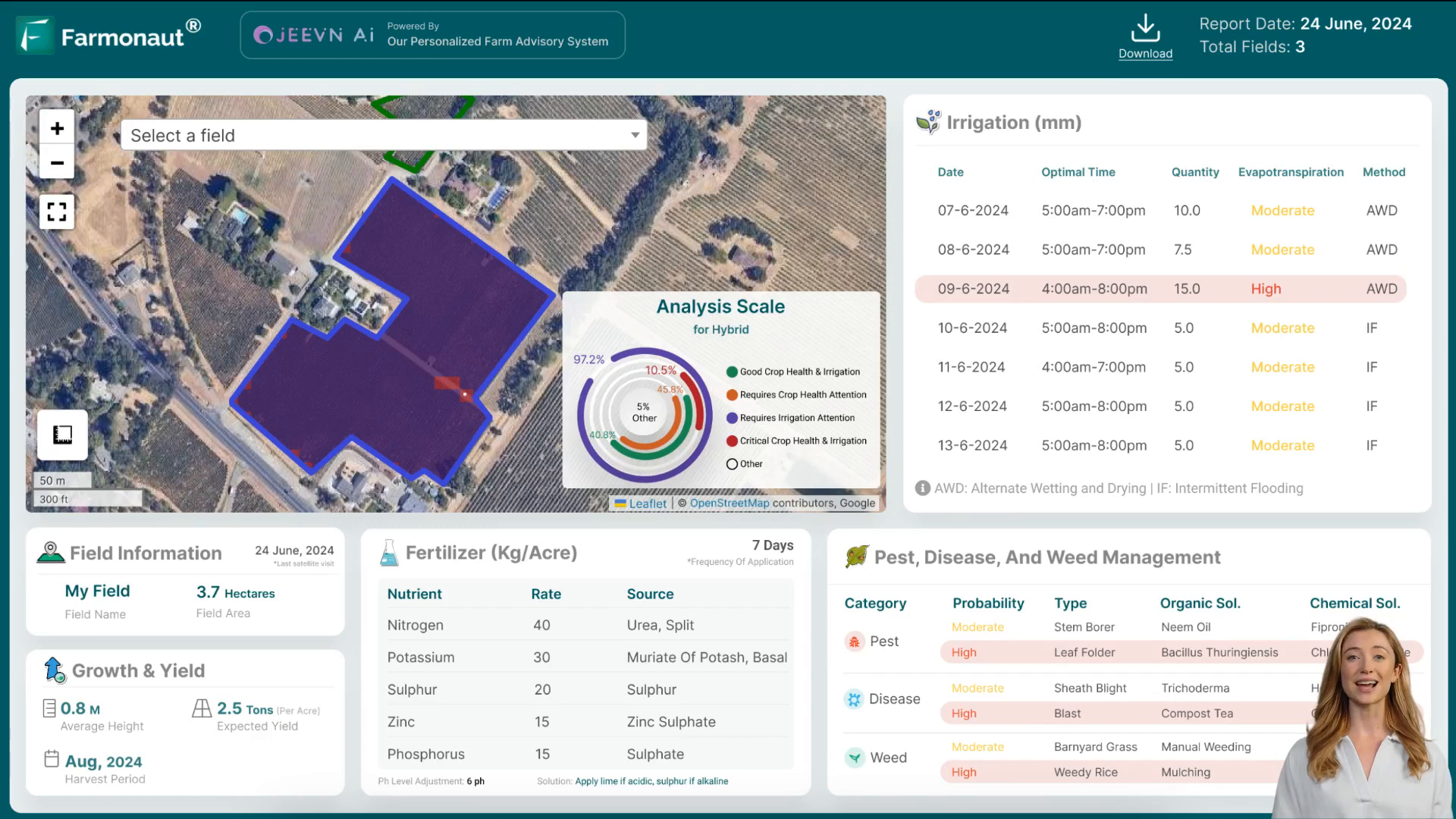
🧪 Soil Nutrient Analysis: Optimizing Texas Corn Fields
One of the key features of JEEVN AI is its ability to provide detailed insights into soil nutrient levels. This is particularly crucial for Texas corn farmers, as the state’s diverse soil types can present unique challenges in nutrient management.
JEEVN AI analyzes the concentrations of essential nutrients including:
- Nitrogen
- Phosphorus
- Potassium
- Zinc
- Sulfur
By understanding what the soil lacks, Texas corn farmers can implement targeted fertilization strategies. For instance, if nitrogen levels are low in a particular field, JEEVN AI will recommend an appropriate amount of nitrogen fertilizer to apply, ensuring corn crops get the nutrients they need for optimal growth.
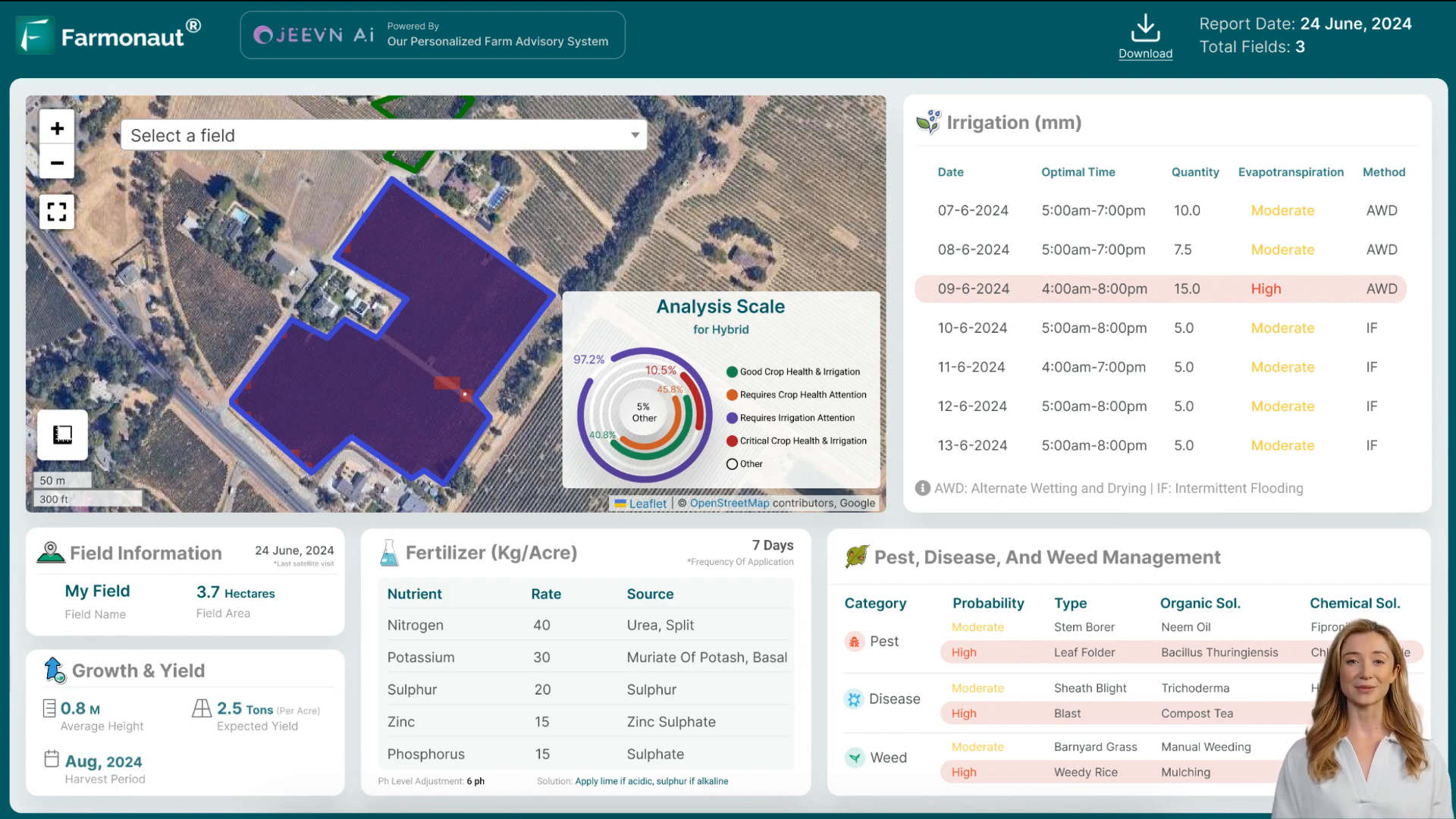
📊 Soil pH Management: Balancing Act for Better Corn Yields
Soil pH plays a significant role in nutrient availability and overall soil health, which is crucial for corn production in Texas. JEEVN AI continuously monitors soil pH levels and offers corrective measures when needed. This feature is particularly valuable in Texas, where soil pH can vary significantly across different regions of the state.
By keeping the soil pH within the optimal range for corn (typically between 6.0 and 6.5), Texas farmers can enhance nutrient uptake by plants, leading to better crop performance. If the soil pH is outside this range, JEEVN AI suggests corrective measures such as:
- Lime application to raise pH
- Sulfur application to lower pH
This proactive approach to soil pH management can help Texas corn farmers maintain ideal growing conditions throughout the season, potentially leading to increased yields and improved corn quality.
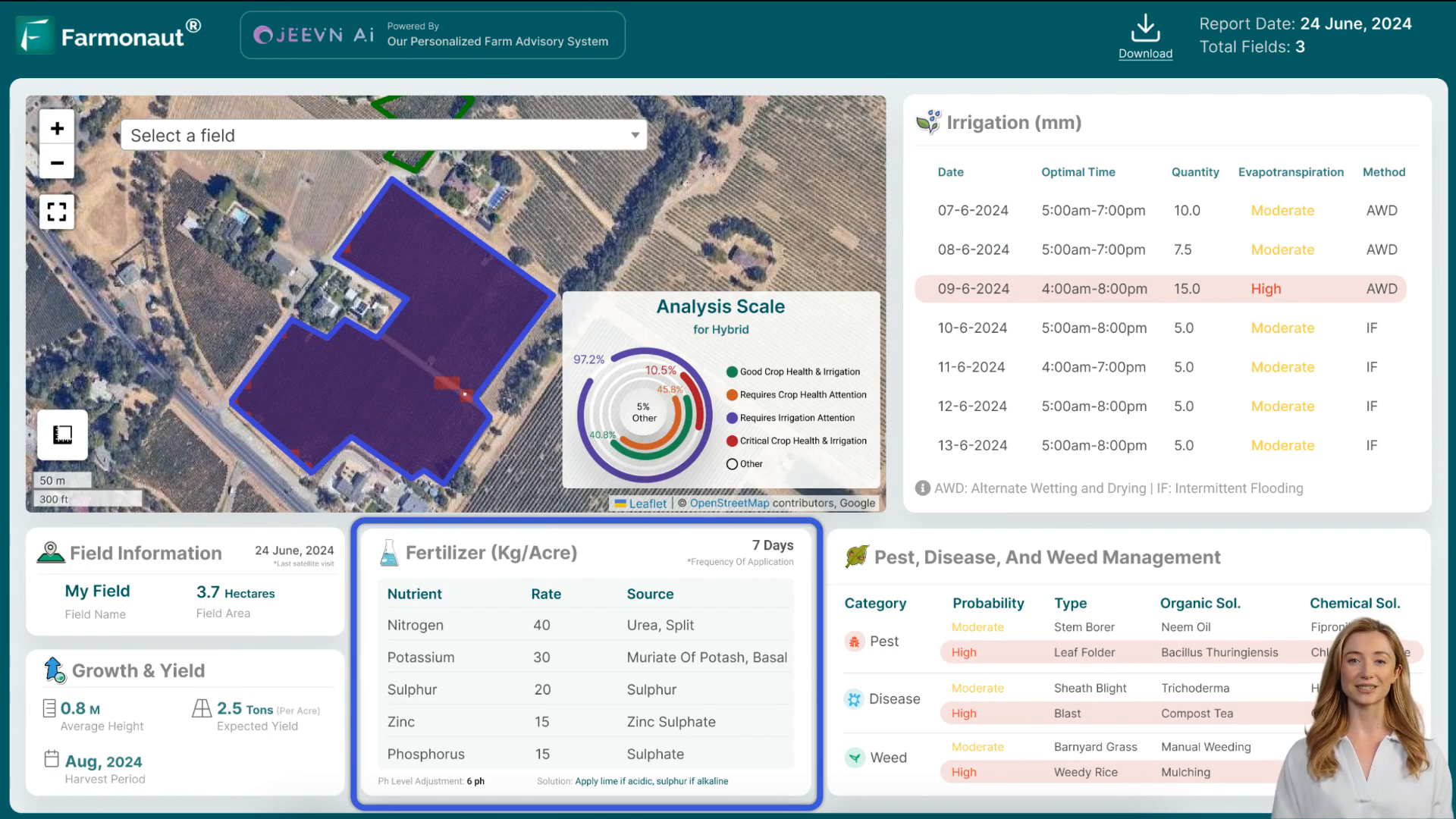
🐛 Early Pest and Disease Detection: Protecting Texas Corn
One of the most impressive features of JEEVN AI is its ability to identify potential pests and diseases affecting corn crops. This is particularly valuable in Texas, where the warm climate can create favorable conditions for various corn pests and diseases.
By analyzing satellite images, weather patterns, and local data, JEEVN AI can:
- Predict pest outbreaks
- Suggest preventive measures
- Provide early warning for disease risks
Early detection and intervention are key to minimizing damage and reducing reliance on chemical pesticides. For example, if conditions are favorable for a common Texas corn pest like the corn earworm, JEEVN AI will alert farmers and provide preventive measures to protect their crops.
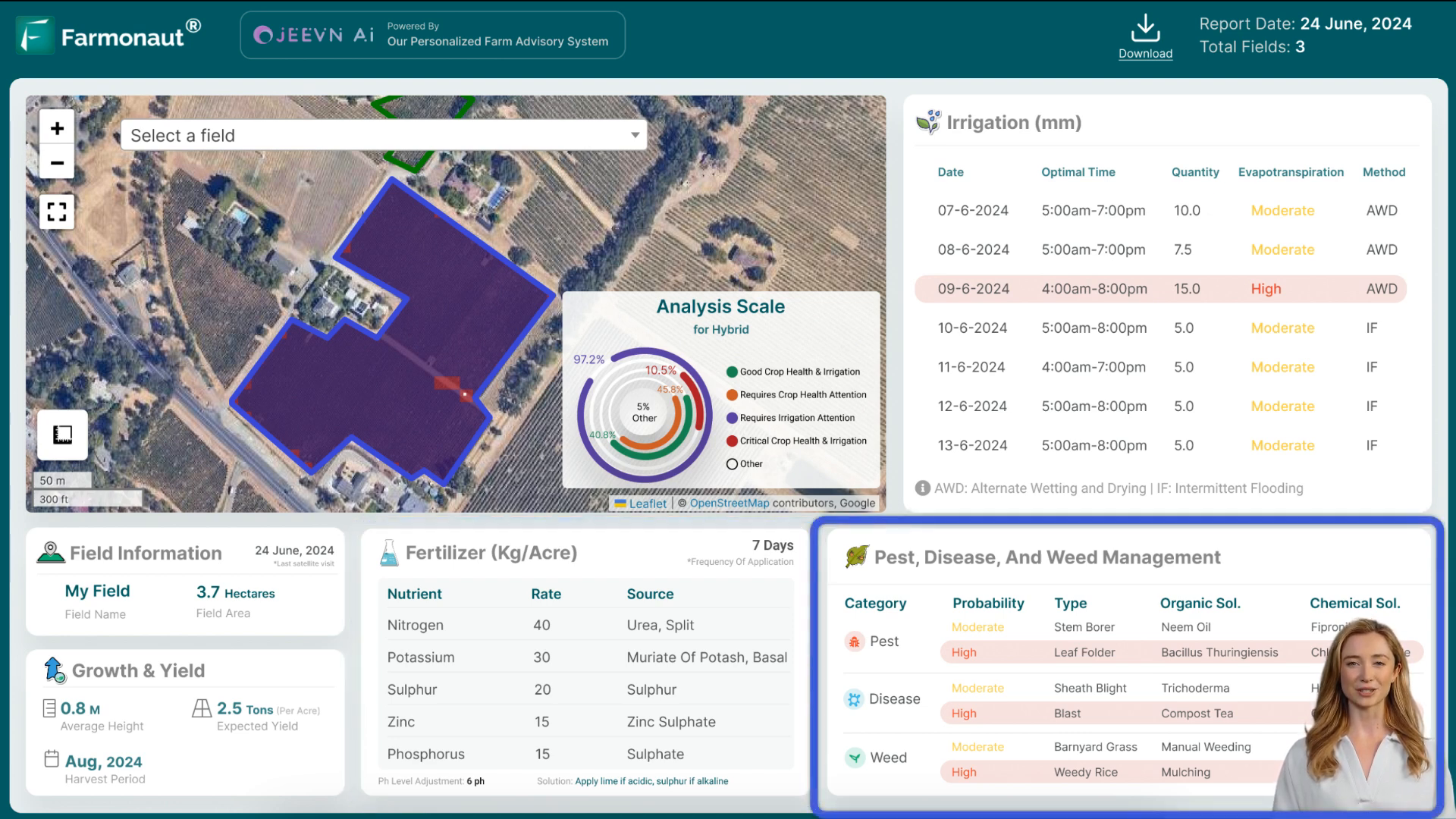
💧 Water Management: Conserving Texas’s Precious Resource
Efficient water usage is essential for sustainable farming, especially in Texas where water conservation is a critical issue. JEEVN AI addresses this challenge by providing precise irrigation recommendations based on:
- Weather data
- Soil moisture levels
- Corn crop water requirements
By providing accurate recommendations on when and how much to water, JEEVN AI helps Texas corn farmers conserve water resources and prevent over or under irrigation. This ensures that corn crops receive the right amount of water at the right time, promoting healthy growth while adhering to Texas’s water conservation efforts.
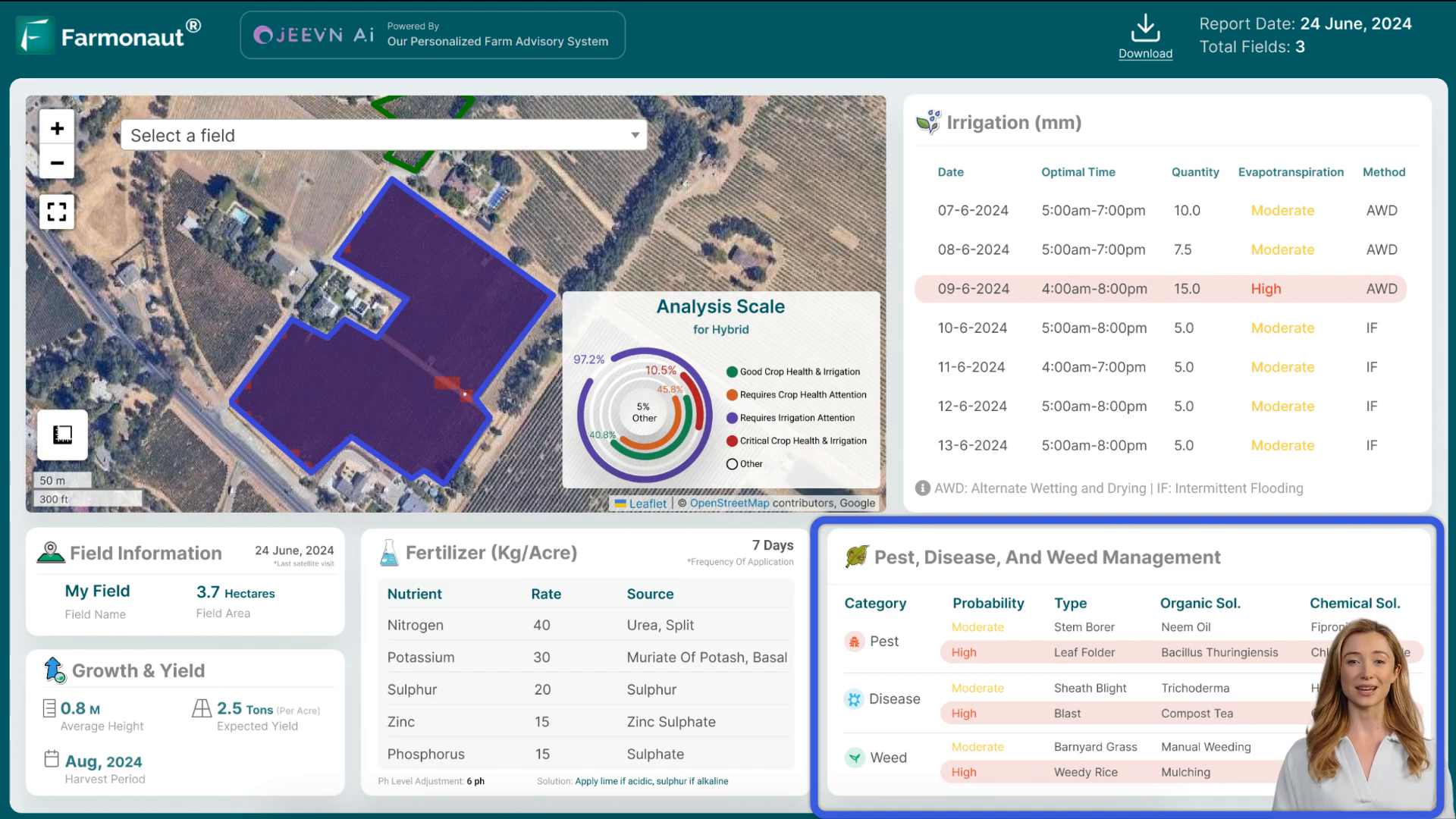
📈 Crop Growth and Yield Predictions: Planning for Success
The impact of JEEVN AI on corn growth and yield in Texas is profound. Not only does the tool ensure optimal soil conditions, but it also provides critical predictions on crop development and potential yields. For Texas corn farmers, this means:
- Accurate forecasts of corn plant height
- Estimates of expected yield per acre
- Predictions of harvest timing
By leveraging these predictions, Texas corn farmers can make informed decisions to enhance their productivity and plan their activities more efficiently. This level of foresight is invaluable in a state where corn production contributes significantly to the agricultural economy.
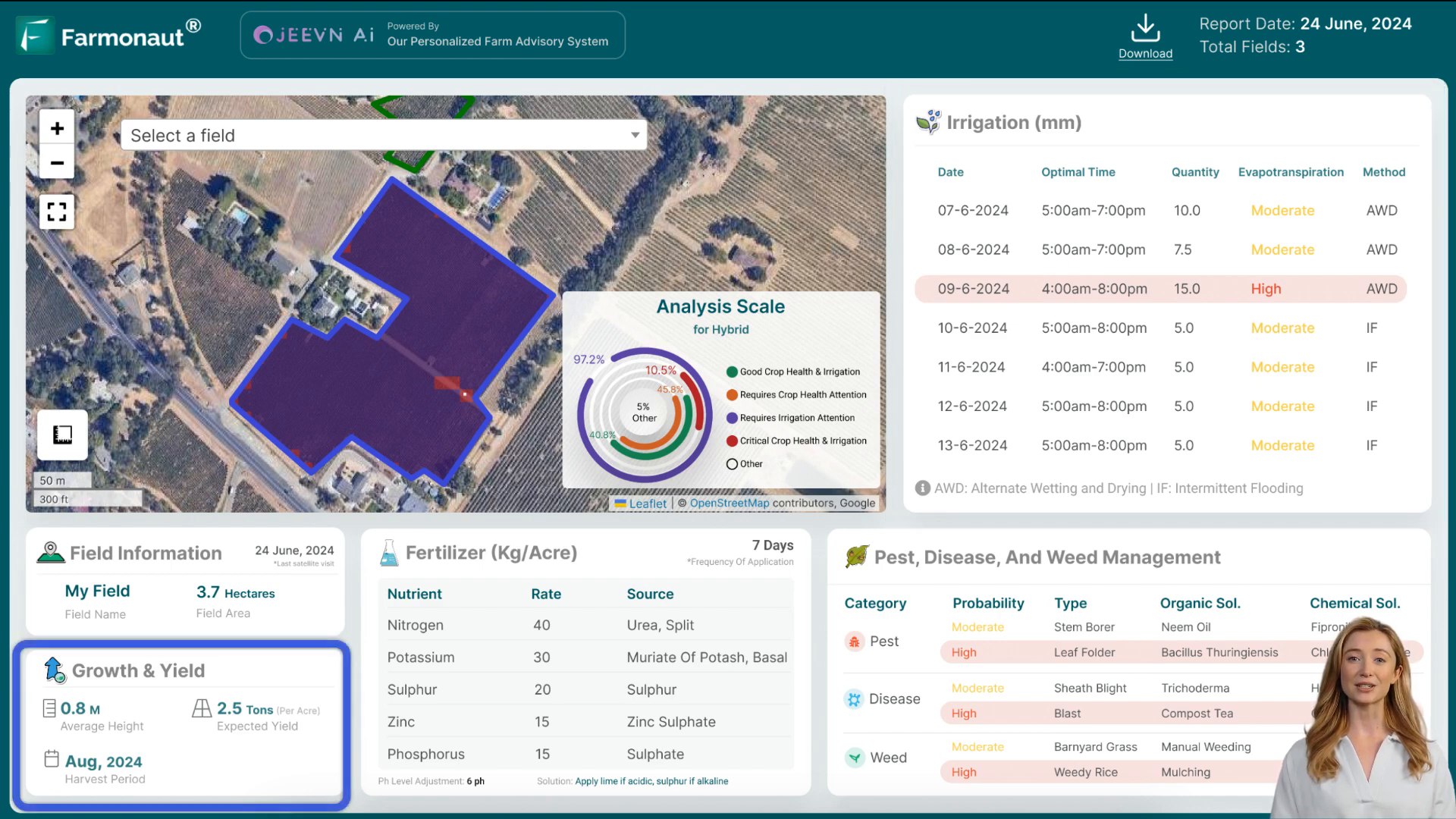
🌟 The JEEVN AI Advantage for Texas Corn Farmers
JEEVN AI is more than just a farm advisory tool; it’s a game-changer for the Texas corn industry. By leveraging the power of artificial intelligence and satellite technology, JEEVN AI provides Texas corn farmers with the insights and recommendations they need to optimize their farming practices and achieve greater success.
The benefits for Texas corn farmers include:
- Increased corn yields
- Improved crop quality
- Reduced input costs
- Enhanced water efficiency
- Better pest and disease management
With JEEVN AI, Texas corn farmers can say goodbye to guesswork and embrace a future of data-driven, precision agriculture. This technology has the potential to not only increase profitability for individual farmers but also to strengthen Texas’s position as a leading corn-producing state.

❓ Frequently Asked Questions about Farmonaut’s Satellite-AI Based Farm Intelligence
What is JEEVN AI?
JEEVN AI is an innovative farm management tool developed by Farmonaut Technologies that uses satellite imagery and artificial intelligence to provide personalized recommendations for farmers, including corn farmers in Texas.
How can JEEVN AI benefit Texas corn farmers?
JEEVN AI can help Texas corn farmers optimize their soil nutrient management, improve water efficiency, detect pests and diseases early, and provide accurate yield predictions, all of which can lead to increased productivity and profitability.
Is JEEVN AI suitable for small-scale corn farmers in Texas?
Yes, JEEVN AI can be beneficial for corn farmers of all scales in Texas. Its personalized recommendations can help small-scale farmers make more informed decisions and optimize their resources.
How does JEEVN AI address water conservation in Texas?
JEEVN AI provides precise irrigation recommendations based on weather data, soil moisture levels, and crop requirements, helping Texas corn farmers use water more efficiently and contribute to the state’s water conservation efforts.
Can JEEVN AI help with Texas-specific corn pests and diseases?
Yes, JEEVN AI is designed to identify and predict outbreaks of pests and diseases specific to the region, including those common in Texas corn fields, allowing for early intervention and prevention.
🌽 Conclusion: Embracing the Future of Texas Corn Farming
As Texas continues to play a crucial role in U.S. corn production, tools like JEEVN AI by Farmonaut Technologies are set to revolutionize the industry. By providing Texas corn farmers with precise, data-driven insights, JEEVN AI is helping to increase yields, improve crop quality, and promote sustainable farming practices.
The future of corn farming in Texas looks brighter with Farmonaut’s Satellite-AI Based Farm Intelligence. As more farmers embrace this technology, we can expect to see a more resilient, productive, and sustainable corn industry in the Lone Star State. The time has come for Texas corn farmers to say goodbye to guesswork and hello to the precision and efficiency offered by JEEVN AI.



